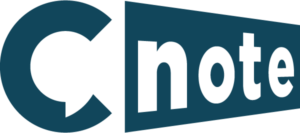Buyer’s Guide
Loan Origination System
What is a mortgage Loan Origination System (LOS)?
A mortgage Loan Origination System (LOS) is a software platform used by lenders to manage and automate the mortgage loan origination process. It helps streamline the entire loan lifecycle, from application submission to closing, by incorporating different modules and functionalities. The LOS enables lenders to handle tasks such as borrower qualification, automated underwriting, document management, compliance checks, and communication with borrowers. It helps improve efficiency, reduce manual errors, and ensure compliance with regulatory requirements. Additionally, it allows lenders to track loan progress, generate reports, and make informed decisions throughout the loan origination process.
Features of a mortgage LOS
The features of a mortgage Loan Origination System (LOS) can vary depending on the specific software provider. However, some common features that you might find in a mortgage LOS include:
- Loan Application Management: Allows lenders to capture borrower information, track the loan application process, and manage multiple loan applications simultaneously.
- Automated Underwriting: Utilizes algorithms and rules-based systems to automatically evaluate borrower eligibility based on predefined criteria and streamline the underwriting process.
- Document Management: Provides secure storage and organization of borrower documents, such as pay stubs, tax returns, and bank statements, to ensure compliance and easy access during loan processing.
- Credit and Risk Assessment: Integrates with credit bureaus to pull credit reports and assess borrower creditworthiness, providing lenders with insights into a borrower’s credit history and risk profile.
- Compliance and Regulation: Helps lenders maintain compliance with various regulatory requirements, such as the Truth in Lending Act (TILA), the Real Estate Settlement Procedures Act (RESPA), and the Home Mortgage Disclosure Act (HMDA).
- Communication and Collaboration: Facilitates seamless communication between lenders, borrowers, and other stakeholders involved in the loan process, allowing for efficient collaboration and timely updates.
- Reporting and Analytics: Generates customized reports and analytics to help lenders assess operational performance, identify bottlenecks, and make data-driven decisions.
- Integration Capabilities: Integrates with third-party systems, such as credit agencies, loan pricing engines, document generation tools, and e-signature platforms, to streamline processes and reduce manual data entry. Additional integrations may include point of sale (POS) platforms and CRMs.
- Workflow Automation: Automates repetitive tasks and workflows, reducing manual effort and minimizing errors while ensuring a consistent loan origination process.
- Mobile Optimization: Provides mobile access for borrowers and loan officers, allowing them to submit applications, track progress, and communicate seamlessly through their mobile devices.
It’s important to note that not all mortgage LOS platforms offer the same set of features. You should research different LOS providers to find the one that best fits your specific needs and requirements.
Benefits of a mortgage LOS
A mortgage Loan Origination System (LOS) offers several benefits to lenders in the mortgage industry. Some of the key benefits include:
- Efficiency and Time Savings: A mortgage LOS automates various tasks and workflows, reducing the need for manual data entry and streamlining the loan origination process. This increased efficiency and time savings can lead to faster loan processing times, allowing lenders to serve more borrowers and close loans more quickly.
- Improved Accuracy and Reduced Errors: With features like automated underwriting and compliance checks, a mortgage LOS helps minimize errors and ensures adherence to regulatory requirements throughout the loan origination process. This can lead to more accurate loan decisions and increased compliance with industry regulations.
- Enhanced Communication and Collaboration: A mortgage LOS facilitates seamless communication and collaboration among different stakeholders involved in the loan origination process, including loan officers, underwriters, processors, borrowers, and other third-party entities. This improved communication can help streamline the exchange of information, reduce delays, and improve overall customer experience.
- Compliance and Risk Management: A quality mortgage LOS integrates compliance tools and features that help lenders stay up to date with regulatory changes and ensure compliance with various laws and regulations. This reduces the risk of non-compliance and potential penalties, protecting lenders and borrowers alike.
- Centralized Document Management: A mortgage LOS often includes a document management system to securely store and organize borrower documents. This centralized document repository makes it easier for lenders to access and manage borrower information, reducing paperwork, and enhancing the efficiency of document processing.
- Analytics and Reporting: Many mortgage LOS platforms offer advanced reporting and analytics capabilities, allowing lenders to gain insights into their loan origination operations. These tools provide valuable data on key performance indicators, loan portfolio analysis, and operational metrics, which can inform decision-making and drive continuous improvement.
It’s important to note that the specific benefits of a mortgage LOS can vary depending on the software provider and the features offered by the platform. Lenders should evaluate different LOS options to find the one that aligns with their specific needs and priorities.
Does a mortgage LOS work for all lines of the mortgage business?
A Loan Origination System (LOS) is a software system designed to manage loan origination and fulfillment processes, pricing and eligibility for loans, and the required documents for underwriting and closing. It interfaces with third-party systems for data and document exchange. However, while a mortgage LOS is primarily used for managing the loan origination process, it may not work for all lines of the mortgage business. Different lines of the mortgage business, such as Retail, Call Center, Wholesale, Correspondent and Servicing may have specific requirements and processes that may not be fully supported by a mortgage LOS.
It’s important to assess the specific needs and requirements of each line of the mortgage business and determine if a mortgage LOS can adequately support those needs. Some mortgage LOS systems may have features and functionalities that cater to different lines of the mortgage business, while others may be more focused on specific aspects of the mortgage origination process.
Other Considerations When Evaluating a Mortgage LOS
When evaluating a Mortgage Loan Origination System (LOS), there are several other considerations beyond the basic benefits that should be taken into account. Some of these considerations include:
- Advanced Features: Assess the advanced features offered by the LOS and determine if they align with your specific needs and requirements. Examples of advanced features could include automated underwriting, rate lock management, secondary marketing integrations, or mobile accessibility. These features can enhance the efficiency and effectiveness of your loan origination process.
- User and Admin Needs: Evaluate the user interface and functionality of the LOS from both a user and administrative perspective. Consider factors such as ease of use, customization options, and accessibility for different user roles. It’s important to ensure that the LOS can cater to the needs of different users and provide an intuitive interface for smooth operations.
- System Integrations: Assess the LOS’s ability to integrate with other systems and platforms that are critical for your mortgage business. For example, integrations with credit bureaus, document management systems, eSignature platforms, or investor portals can streamline data exchange and improve workflow efficiency. Ensure that the LOS has the capability to integrate with your existing software stack.
- Compliance Requirements: Evaluate the LOS’s compliance capabilities and its adherence to industry regulations. Consider the LOS’s built-in compliance tools, compliance tracking features, and the ability to customize compliance rules. A robust LOS should help efficiently manage compliance requirements, reducing the risk of non-compliance and potential penalties.
- Implementation, Training, and Adoption: Assess the implementation process and support offered by the LOS provider. Consider factors such as the time required for implementation, availability of training resources, and ongoing support. Evaluate the level of assistance provided by the LOS provider in terms of system setup, data migration, and user training. Additionally, consider the ease of adoption for your team members to ensure a successful transition to the new system.
By considering these additional factors, you can make a more informed decision when evaluating a Mortgage LOS and choose a solution that best fits your specific needs and requirements.
Please note that these considerations can vary depending on your business model, regulatory environment, and specific requirements. It’s advisable to consult with vendors, review product demos, and involve key stakeholders in the evaluation process to ensure the chosen LOS meets your unique needs.
How much does a mortgage LOS cost?
The cost of a mortgage Loan Origination System (LOS) can vary depending on several factors such as the size of the organization, the scope of features and functionality needed, and the specific vendor chosen.
There is no fixed price for an LOS as it typically involves one-time implementation costs, ongoing licensing fees, and potential additional costs for system customization, training, and support. Pricing models can differ, including per-user licensing, transaction-based fees, or a combination of both.
To get accurate and up-to-date information on the cost of a mortgage LOS, it is recommended to contact LOS vendors directly. They can provide pricing details based on your specific needs and requirements. Additionally, it may be useful to consult with industry experts or seek recommendations from other mortgage lenders who have implemented an LOS.
Keep in mind that different vendors may offer different pricing structures and packages, so it’s important to evaluate multiple options to find the one that best fits your budget and requirements.
Please note that the information provided here is general in nature, and actual cost can vary significantly. It is always advisable to directly contact vendors for specific pricing information.
To Recap
A mortgage Loan Origination System (LOS) is a software platform used by lenders to manage and automate the mortgage loan origination process. It streamlines the entire lifecycle of a loan, from application submission to closing, by incorporating various modules and functionalities. Some common features of a mortgage LOS include loan application management, automated underwriting, document management, credit and risk assessment, compliance and regulation tools, communication and collaboration capabilities, reporting and analytics, integration capabilities, workflow automation, and mobile optimization. A mortgage LOS offers benefits such as increased efficiency and time savings, improved accuracy and reduced errors, enhanced communication and collaboration, compliance and risk management, centralized document management, and analytics and reporting. However, it’s important to note that a mortgage LOS may not work for all lines of the mortgage business as different lines may have specific requirements and processes. When evaluating a mortgage LOS, it’s important to consider advanced features, user and admin needs, system integrations, compliance requirements, and implementation, training, and adoption. The cost of a mortgage LOS varies depending on factors such as the size of the organization, the scope of features needed, and the vendor chosen.



